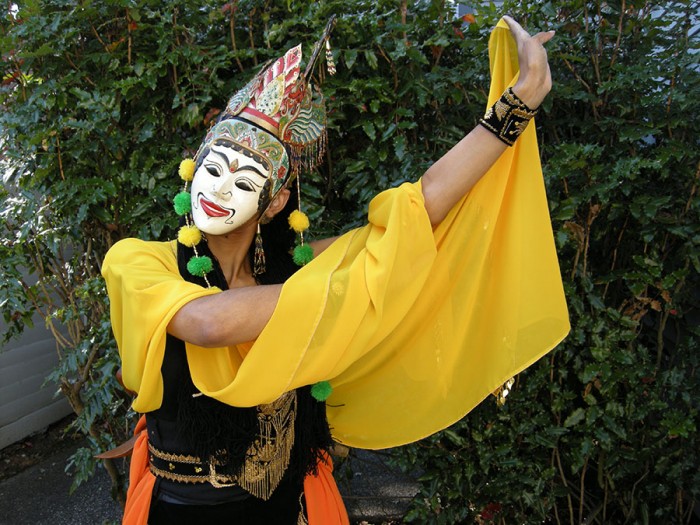
This Saturday, celebrating the unique islands of Indonesia — from Sumatra, Java, Bali, Madura and more — will manifest in eclectic dance performances at Langston Hughes Performing Arts Institute.
“Malam Budaya: A Cultural Night of Indonesian Dance in Seattle,” produced by Seattle folk dance veteran Astrid Vinje, showcases elaborate and diverse performances by Vinje, Christina Sunardi, Hawwa Djuned and Tikka Sears. It’s a rare opportunity to see the stylistic trademarks of different Indonesian islands on one stage.
“I wanted to bring these different dances together, as there are a lot of different dance styles in Indonesia, and they highlight the diversity of the country,” says Astrid. “I wanted to be able to share that with the people here in Seattle and show that Indonesian dance is not one specific style.”
The dances performed at Malam Budaya come from Java, Bali, Sumatra and Madura islands — all home to different ethnic groups and cultures reflected in the dance program. The dances also range from traditional court dances with subtle, refined moves to more recent modern dances such as Gelang Ro’om, which has relatively faster beats and more dynamic movements. Origins of some of the court dances are Indonesian palaces where they were performed for the sultans, then the Dutch, who later ruled Indonesia. Dances sometimes mimic the wayang (shadow puppets) shows, Astrid says, while some dances are a precursor to these puppet shows.
Performer Christina Sunardi, an ethnomusicology professor at the University of Washington who has studied and performed the Javanese arts since 1997, will dance the Gunung Sari from the Malang region of East Java donning an elaborate headdress and a mask to depict the knightly character Gunung Sari from Malang folklore. These dances are traditionally performed at weddings, circumcisions and other events, says Sunardi, while Jai Pongan from the western part of Java is more lively and flirtatious with fast movements.
Tari Panen, from Sumatra, another type of dance performed, is a folk dance depicting women working in the rice fields. Another traditional dance predominately from Hindu Bali, Taruna Jaya (meaning “energy of youth”) stems from a traditional village welcoming ceremony.
Each of these dance traditions tells the history of its people and their livelihood.
“When all of them are performed together, one would be able to see how diverse Indonesia is,” adds Astrid.
Astrid has been dancing for 26 years — 12 of which have been dedicated to learning Indonesian dance. She’s performed throughout Seattle, from events organized by cultural organizations like the University of Washington’s Indonesian Student Association, to large regional festivals such as Northwest Folklife.
Though she’s had the opportunity to perform at these various cultural events, she notes that “in all those performances, dance was a side event, and what I really wanted to do was focus on dance itself.”
This Saturday, these multifarious Indonesian dance traditions and their expert practitioners will take center stage.
“Malam Budaya: A Cultural Night of Indonesian Dance in Seattle” starts at 6 p.m. on Saturday, July 26th at Langston Hughes Performing Arts Institute on 104 Seventeenth Avenue South in Seattle’s Central District.
For tickets and more information visit SeattleIndonesianDance.com.

